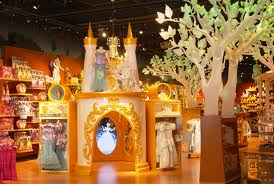The Disney Princesses are role models for many young girls. They are involved in the lives of these girls through movies, music, books, toys, clothes, decoration, kitchenware and much more. Their stories and songs are memorized and harbored in the minds of children as how they are supposed to act and what their lives will be like: perfect and beautiful, with a happily ever after.
In the storylines of the early Disney Princess movies the princesses always seem to be “women-in-waiting”. Sure they have small problems that need to be dealt with, but there is nothing too big that a cheerful song can not fix, and the grand solution to all problems is Prince Charming. The movies show that all a girl needs in her life is a rich man to make her happy. Her purpose is to wait around until he finds her, and spend the rest of her life fulfilling his needs. This can be a problem for young girls of the 21st century. The target age of Disney Princess merchandise is ages 3-5 (Wohlwend, 1), which is a very impressionable age. This merchandise (Figure 1), or “Princess Culture”, includes everything from Snow White eating utensils to Pocahontas bath soap. It can be very confusing for girls to have an influence as strong as Disney in one ear preaching dependence on men and money, and having the entire modern society in the other ear telling them they can be independent and just as powerful and influential as men.
 |
| Fig. 1 Princess Merchandise in The Disney Store |
No comments:
Post a Comment